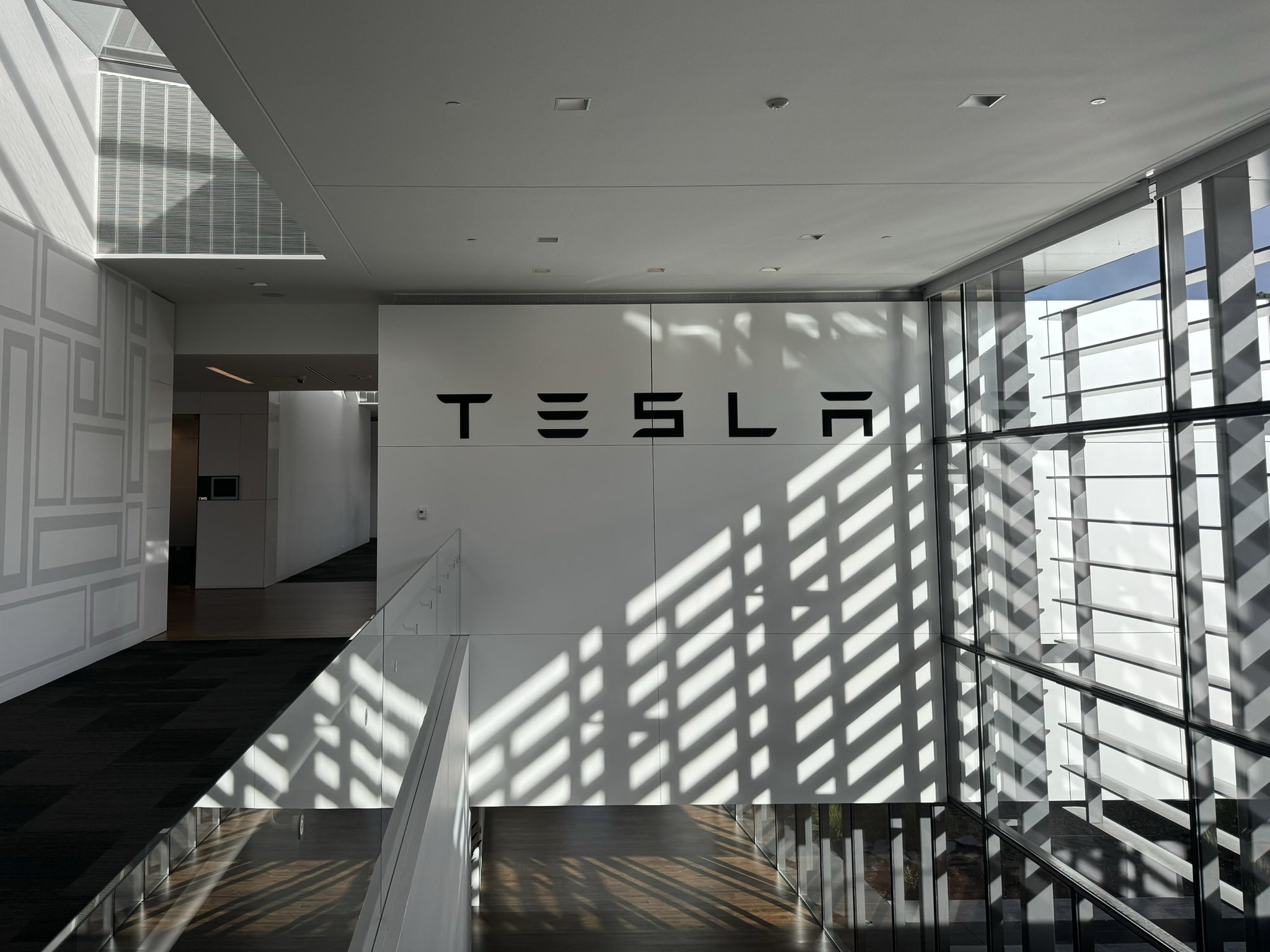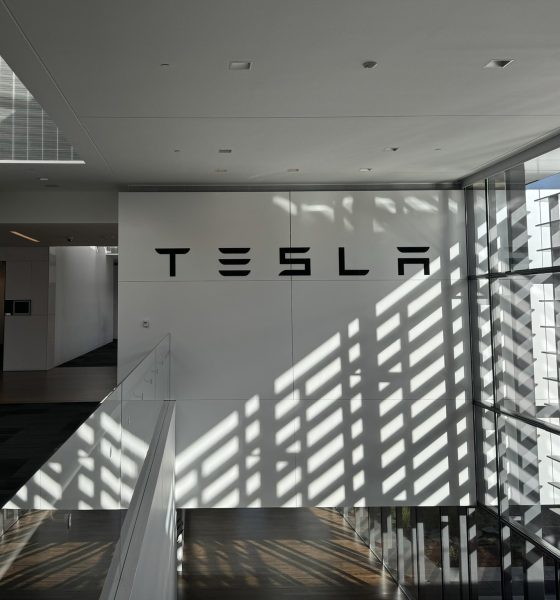

News
Tesla investor’s legal team urges DE court to respect Musk pay ratification vote
Tesla shareholders ratified Elon Musk’s 2018 CEO Performance Award at the 2024 Cyber Roundup, but the fight about the matter in Delaware Court is not over just yet. This was highlighted in a joinder filed by the legal team of a TSLA investor who decided to challenge the astronomical fee request of the lawyers of shareholder Richard Tornetta, who filed a legal complaint about Musk’s 2018 pay package at a time when he held just nine shares of the EV maker.
Tornetta’s legal team has argued that they deserve to be paid over 29 million shares of TSLA for their services in the case, which translated to over $5 billion at the time or over $200,000 per hour. Tesla shareholder Amy Steffens, a longtime investor of Tesla with over 19,000 shares, secured her own legal team to challenge the fee request of Tornetta’s lawyers. Following the decision of Tesla investors to ratify Musk’s pay package at the 2024 Cyber Roundup, Tornetta’s legal team argued that the ratification of the CEO’s pay package was invalid since investors were still “coerced” and “uninformed.” The lawyers also described the events that transpired leading up to the ratification of Musk’s pay package as a “clown show.”
Steffens’ legal team has now submitted a joinder for the case, which will hopefully be heard later this week when the court is expected to hold a hearing for the motion to reconsider the Delaware Judge’s preliminary ruling in the case. The joinder, parts of which were shared on X by Tesla investor Alexandra Merz, argued that the ratification of Musk’s pay package by TSLA shareholders showed that Tornetta’s complaint against the CEO Performance Award “provided no tangible economic benefit to Tesla or its stockholders.” Steffens’ legal team also highlighted that contrary to the claims of Tornetta’s lawyers, the shareholder vote on Musk’s pay plan is likely among the most informed stockholder votes in Delaware history.
2/ pic.twitter.com/yR15N66cbM— Ale?andra Merz ?? (@TeslaBoomerMama) July 30, 2024
“The Ratification Vote was fully informed indeed, it is likely among the most informed votes in Delaware corporate history. The extensive proxy filings included this Court’s rescission opinion, so Tesla’s stockholders were well aware of the issues identified by this Court prior to their ratification vote. The ratification issue was robustly debated online, on television, and in newspapers. Opponents— including Mr. Tornetta’s experts in this litigation made their voices heard.’ When the votes came in, Mr. Tornetta lost decisively: 72% of disinterested voting shares favored ratification,” the lawyers wrote.
4/ pic.twitter.com/xc0k1Zsq9A— Ale?andra Merz ?? (@TeslaBoomerMama) July 30, 2024
Steffens’ legal team also addressed the “clown show” comment from Tornetta’s attorneys. “Mr. Tornetta’s counsel disparages this exercise of stockholder democracy as a ‘clown show.’ It is anything but. Ms. Steffens and Tesla’s other stockholders had all the relevant facts before them, including this Court’s decision, and determined that the 2018 Grant benefited them more than rescission. When stockholders freely petition their elected board for a vote, and then overwhelmingly affirm a board’s decision by voting to uphold it, further litigation by a derivative plaintiff attacking that democratically determined result is neither necessary nor appropriate,” Steffens’ legal team noted.
The longtime Tesla investors’ legal team urged the court to respect TSLA stockholders’ democracy as well. “Even beyond Due Process concerns, respect for stockholder democracy commends limiting Plaintiff’s continuing role in light of the Ratification Vote. Here, the question goes beyond Mr. Tornetta’s adequacy to the source of his authority. When Mr. Tornetta steps into the shoes of Tesla as a derivative plaintiff, he does so without democratic legitimacy. Tesla’s stockholders can vote out their directors, but they lack any democratic means to revoke Mr. Tornetta’s authority as a plaintiff.
??— Elon Musk (@elonmusk) July 30, 2024
“Ms. Steffens respectfully suggests that in this specific context-where a supermajority of fully-informed, uncoerced stockholders unambiguously repudiates the relief obtained by a derivative plaintiff-the Court should treat this as a vote of no confidence and withdraw Mr. Tornetta’s authority to act on behalf of the Company. At the very least, where a plaintiff has shown himself willing to pay his counsel hundreds of thousands of dollars per hour to engage in legal work that conflicts directly with the wishes of the vast majority of stockholders, those stockholders should have some means (through the ballot box or the courtroom) to eliminate that plaintiff’s authority to continue to engage in such damaging conduct while purporting to act on their behalf,” the longtime TSLA shareholder’s legal team wrote.
Tesla CEO Elon Musk seems to have appreciated the efforts of the TSLA stockholder’s legal team. Responding to a post about the matter on social media platform X, Musk responded to the shareholder’s efforts with a couple of “lit” emojis.
Don’t hesitate to contact us with news tips. Just send a message to simon@teslarati.com to give us a heads up.

News
Tesla FSD fleet is nearing 7 billion total miles, including 2.5 billion city miles
As can be seen on Tesla’s official FSD webpage, vehicles equipped with the system have now navigated over 6.99 billion miles.

Tesla’s Full Self-Driving (Supervised) fleet is closing in on almost 7 billion total miles driven, as per data posted by the company on its official FSD webpage.
These figures hint at the massive scale of data fueling Tesla’s rapid FSD improvements, which have been quite notable as of late.
FSD mileage milestones
As can be seen on Tesla’s official FSD webpage, vehicles equipped with the system have now navigated over 6.99 billion miles. Tesla owner and avid FSD tester Whole Mars Catalog also shared a screenshot indicating that from the nearly 7 billion miles traveled by the FSD fleet, more than 2.5 billion miles were driven inside cities.
City miles are particularly valuable for complex urban scenarios like unprotected turns, pedestrian interactions, and traffic lights. This is also the difference-maker for FSD, as only complex solutions, such as Waymo’s self-driving taxis, operate similarly on inner-city streets. And even then, incidents such as the San Francisco blackouts have proven challenging for sensor-rich vehicles like Waymos.
Tesla’s data edge
Tesla has a number of advantages in the autonomous vehicle sector, one of which is the size of its fleet and the number of vehicles training FSD on real-world roads. Tesla’s nearly 7 billion FSD miles then allow the company to roll out updates that make its vehicles behave like they are being driven by experienced drivers, even if they are operating on their own.
So notable are Tesla’s improvements to FSD that NVIDIA Director of Robotics Jim Fan, after experiencing FSD v14, noted that the system is the first AI that passes what he described as a “Physical Turing Test.”
“Despite knowing exactly how robot learning works, I still find it magical watching the steering wheel turn by itself. First it feels surreal, next it becomes routine. Then, like the smartphone, taking it away actively hurts. This is how humanity gets rewired and glued to god-like technologies,” Fan wrote in a post on X.
News
Tesla starts showing how FSD will change lives in Europe
Local officials tested the system on narrow country roads and were impressed by FSD’s smooth, human-like driving, with some calling the service a game-changer for everyday life in areas that are far from urban centers.

Tesla has launched Europe’s first public shuttle service using Full Self-Driving (Supervised) in the rural Eifelkreis Bitburg-Prüm region of Germany, demonstrating how the technology can restore independence and mobility for people who struggle with limited transport options.
Local officials tested the system on narrow country roads and were impressed by FSD’s smooth, human-like driving, with some calling the service a game-changer for everyday life in areas that are far from urban centers.
Officials see real impact on rural residents
Arzfeld Mayor Johannes Kuhl and District Administrator Andreas Kruppert personally tested the Tesla shuttle service. This allowed them to see just how well FSD navigated winding lanes and rural roads confidently. Kruppert said, “Autonomous driving sounds like science fiction to many, but we simply see here that it works totally well in rural regions too.” Kuhl, for his part, also noted that FSD “feels like a very experienced driver.”
The pilot complements the area’s “Citizen Bus” program, which provides on-demand rides for elderly residents who can no longer drive themselves. Tesla Europe shared a video of a demonstration of the service, highlighting how FSD gives people their freedom back, even in places where public transport is not as prevalent.
What the Ministry for Economic Affairs and Transport says
Rhineland-Palatinate’s Minister Daniela Schmitt supported the project, praising the collaboration that made this “first of its kind in Europe” possible. As per the ministry, the rural rollout for the service shows FSD’s potential beyond major cities, and it delivers tangible benefits like grocery runs, doctor visits, and social connections for isolated residents.
“Reliable and flexible mobility is especially vital in rural areas. With the launch of a shuttle service using self-driving vehicles (FSD supervised) by Tesla in the Eifelkreis Bitburg-Prüm, an innovative pilot project is now getting underway that complements local community bus services. It is the first project of its kind in Europe.
“The result is a real gain for rural mobility: greater accessibility, more flexibility and tangible benefits for everyday life. A strong signal for innovation, cooperation and future-oriented mobility beyond urban centers,” the ministry wrote in a LinkedIn post.
News
Tesla China quietly posts Robotaxi-related job listing
Tesla China is currently seeking a Low Voltage Electrical Engineer to work on circuit board design for the company’s autonomous vehicles.

Tesla has posted a new job listing in Shanghai explicitly tied to its Robotaxi program, fueling speculation that the company is preparing to launch its dedicated autonomous ride-hailing service in China.
As noted in the listing, Tesla China is currently seeking a Low Voltage Electrical Engineer to work on circuit board design for the company’s autonomous vehicles.
Robotaxi-specific role
The listing, which was shared on social media platform X by industry watcher @tslaming, suggested that Tesla China is looking to fill the role urgently. The job listing itself specifically mentions that the person hired for the role will be working on the Low Voltage Hardware team, which would design the circuit boards that would serve as the nervous system of the Robotaxi.
Key tasks for the role, as indicated in the job listing, include collaboration with PCB layout, firmware, mechanical, program management, and validation teams, among other responsibilities. The role is based in Shanghai.
China Robotaxi launch
China represents a massive potential market for robotaxis, with its dense urban centers and supportive policies in select cities. Tesla has limited permission to roll out FSD in the country, though despite this, its vehicles have been hailed as among the best in the market when it comes to autonomous features. So far, at least, it appears that China supports Tesla’s FSD and Robotaxi rollout.
This was hinted at in November, when Tesla brought the Cybercab to the 8th China International Import Expo (CIIE) in Shanghai, marking the first time that the autonomous two-seater was brought to the Asia-Pacific region. The vehicle, despite not having a release date in China, received a significant amount of interest among the event’s attendees.








